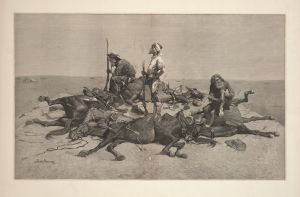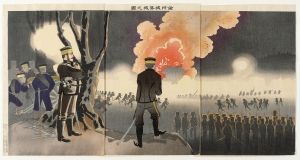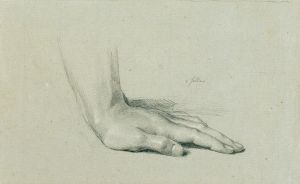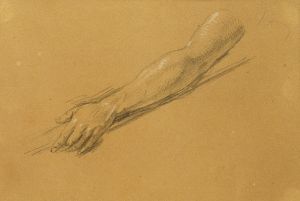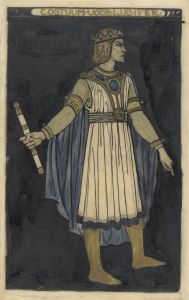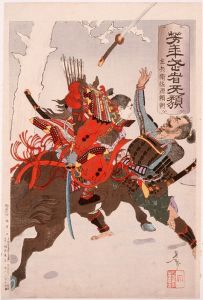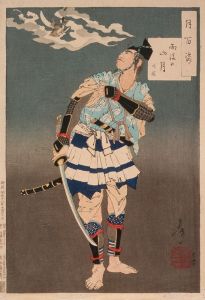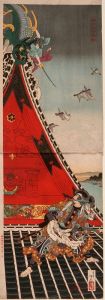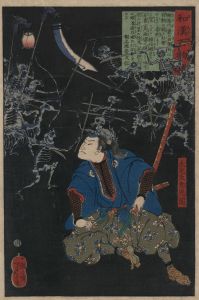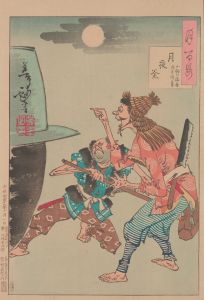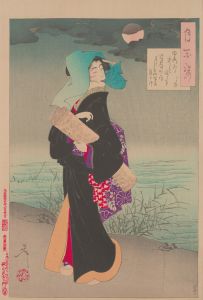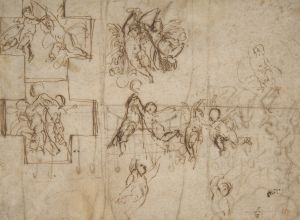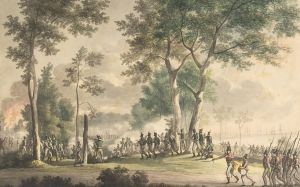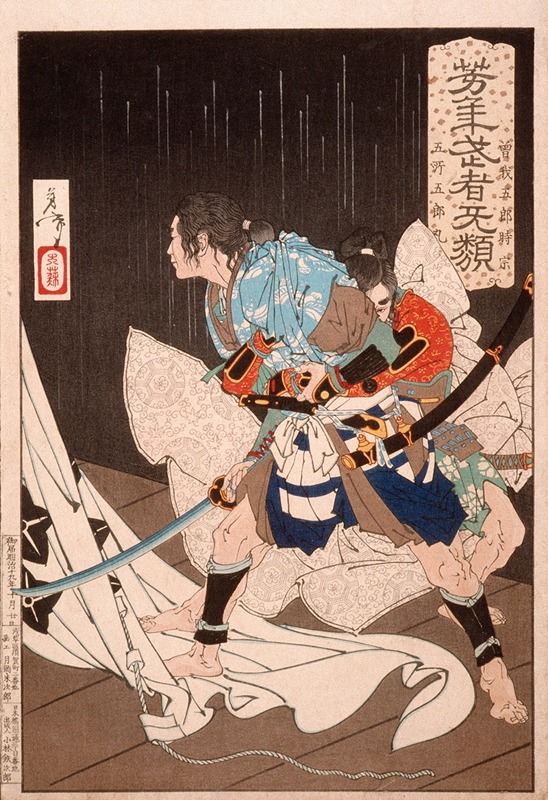
Soga no Gorō Tokimune Held Back by Gosho no Gorōmaru
A hand-painted replica of Tsukioka Yoshitoshi’s masterpiece Soga no Gorō Tokimune Held Back by Gosho no Gorōmaru, meticulously crafted by professional artists to capture the true essence of the original. Each piece is created with museum-quality canvas and rare mineral pigments, carefully painted by experienced artists with delicate brushstrokes and rich, layered colors to perfectly recreate the texture of the original artwork. Unlike machine-printed reproductions, this hand-painted version brings the painting to life, infused with the artist’s emotions and skill in every stroke. Whether for personal collection or home decoration, it instantly elevates the artistic atmosphere of any space.
Tsukioka Yoshitoshi, a renowned Japanese ukiyo-e artist of the late Edo and early Meiji periods, created the artwork titled "Soga no Gorō Tokimune Held Back by Gosho no Gorōmaru." Yoshitoshi is celebrated for his innovative approach to traditional woodblock printing, and his works often reflect a deep engagement with historical and legendary themes, as well as a keen interest in the human condition.
This particular piece is part of Yoshitoshi's larger body of work that frequently draws upon historical and legendary narratives from Japanese culture. The artwork depicts a dramatic scene involving Soga no Gorō Tokimune, a figure from the famous Soga Monogatari, a historical tale that recounts the story of the Soga brothers, Jūrō and Gorō, and their quest for revenge against Kudō Suketsune, who was responsible for their father's death.
In the scene captured by Yoshitoshi, Soga no Gorō Tokimune is being restrained by Gosho no Gorōmaru. The depiction is dynamic and full of tension, showcasing Yoshitoshi's skill in conveying emotion and movement through the medium of woodblock printing. The Soga brothers' story is a popular subject in Japanese art and literature, celebrated for its themes of loyalty, familial duty, and the pursuit of justice.
Yoshitoshi's portrayal of this scene is notable for its vivid detail and the use of color to enhance the drama of the moment. The expressions of the characters, the intricate patterns of their clothing, and the careful composition all contribute to the intensity of the artwork. Yoshitoshi was known for his ability to capture the essence of a narrative in a single image, and this piece is a testament to that skill.
The Soga brothers' tale has been a significant part of Japanese cultural history, inspiring numerous adaptations in various forms of art, including kabuki theater, literature, and visual arts. Yoshitoshi's interpretation is one of many, yet it stands out for its artistic quality and the way it encapsulates the emotional core of the story.
Yoshitoshi's work during this period often reflected the transitions occurring in Japanese society as it moved from the Edo period into the Meiji era. His art bridged traditional Japanese themes with new influences, and his innovative techniques helped to revitalize the ukiyo-e genre at a time when it was facing decline due to the advent of new printing technologies and changing tastes.
"Soga no Gorō Tokimune Held Back by Gosho no Gorōmaru" is a fine example of Yoshitoshi's mastery in ukiyo-e, demonstrating his ability to blend historical narrative with artistic expression. His works continue to be studied and admired for their technical excellence and their ability to convey complex stories and emotions through the medium of woodblock prints.





